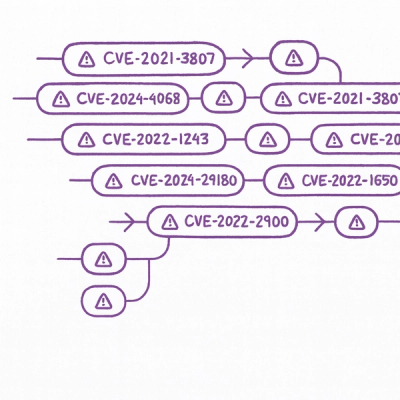
Security News
New Website “Is It Really FOSS?” Tracks Transparency in Open Source Distribution Models
A new site reviews software projects to reveal if they’re truly FOSS, making complex licensing and distribution models easy to understand.
h1. About
Disclaimer: This library is still work in progress.
SockJS is WebSocket emulation library. It means that you use the WebSocket API, only instead of @WebSocket@ class you instantiate @SockJS@ class. I highly recommend to read "SockJS: WebSocket emulation":http://www.rabbitmq.com/blog/2011/09/13/sockjs-websocket-emulation on the RabbitMQ blog for more info.
h2. Prerequisites
Even though this library uses Rack interface, Thin is required as "it supports asynchronous callback":http://macournoyer.com/blog/2009/06/04/pusher-and-async-with-thin. For Websockets, we use "faye-websocket":http://blog.jcoglan.com/2011/11/28/announcing-faye-websocket-a-standards-compliant-websocket-library gem.
h2. The Client-Side Part
For the client-side part you have to use JS library "sockjs-client":http://sockjs.github.com/sockjs-client which provides WebSocket-like API. Here's an example:
h2. The Server-Side Part
Now in order to have someone to talk to, we need to run a server. That's exactly what is sockjs-ruby good for:
#!/usr/bin/env ruby
# encoding: utf-8
require "rack"
require "rack/sockjs"
require "eventmachine"
# Your custom app.
class MyHelloWorld
def call(env)
body = "This is the app, not SockJS."
headers = {
"Content-Type" => "text/plain; charset=UTF-8",
"Content-Length" => body.bytesize.to_s
}
[200, headers, [body]]
end
end
app = Rack::Builder.new do
# Run one SockJS app on /echo.
use SockJS, "/echo" do |connection|
connection.subscribe do |session, message|
session.send(message)
end
end
# ... and the other one on /close.
use SockJS, "/close" do |connection|
connection.session_open do |session|
session.close(3000, "Go away!")
end
end
# This app will run on other URLs than /echo and /close,
# as these has already been assigned to SockJS.
run MyHelloWorld.new
end
EM.run do
thin = Rack::Handler.get("thin")
thin.run(app.to_app, Port: 8081)
end
For more complex example check "examples/sockjs_apps_for_sockjs_protocol_tests.rb":https://github.com/sockjs/sockjs-ruby/blob/master/examples/sockjs_apps_for_sockjs_protocol_tests.rb
h2. SockJS Family
h1. Development
Get "sockjs-protocol":https://github.com/sockjs/sockjs-protocol (installation information are in its README) and run @rake protocol_test@. Now you can run the tests against it, for instance:
# Run all the tests. ./venv/bin/python sockjs-protocol-0.2.1.py # Run all the tests defined in XhrStreaming. ./venv/bin/python sockjs-protocol-0.2.1.py XhrStreaming # Run only XhrStreaming.test_transport test. ./venv/bin/python sockjs-protocol-0.2.1.py XhrStreaming.test_transport
h1. Links
FAQs
Unknown package
We found that volt-sockjs demonstrated a not healthy version release cadence and project activity because the last version was released a year ago. It has 1 open source maintainer collaborating on the project.
Did you know?

Socket for GitHub automatically highlights issues in each pull request and monitors the health of all your open source dependencies. Discover the contents of your packages and block harmful activity before you install or update your dependencies.

Security News
A new site reviews software projects to reveal if they’re truly FOSS, making complex licensing and distribution models easy to understand.

Security News
Astral unveils pyx, a Python-native package registry in beta, designed to speed installs, enhance security, and integrate deeply with uv.

Security News
The Latio podcast explores how static and runtime reachability help teams prioritize exploitable vulnerabilities and streamline AppSec workflows.